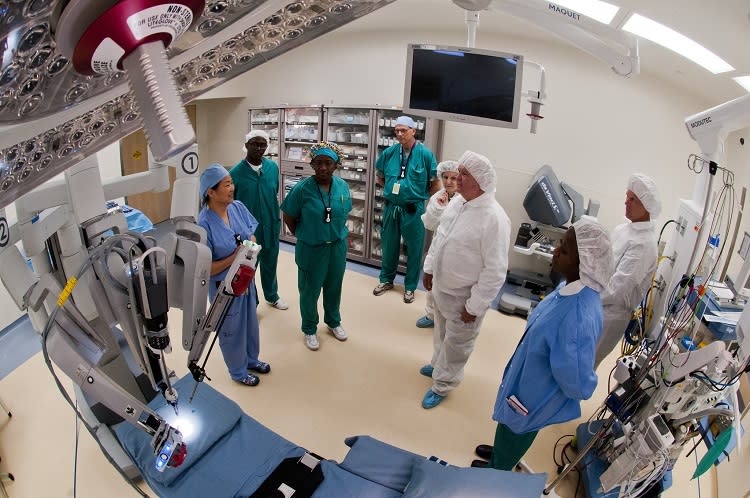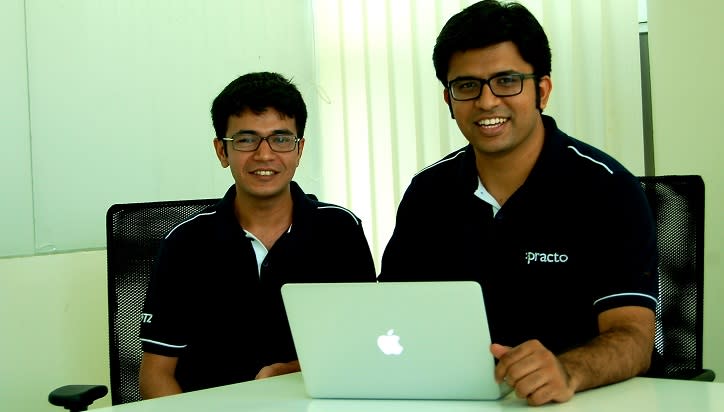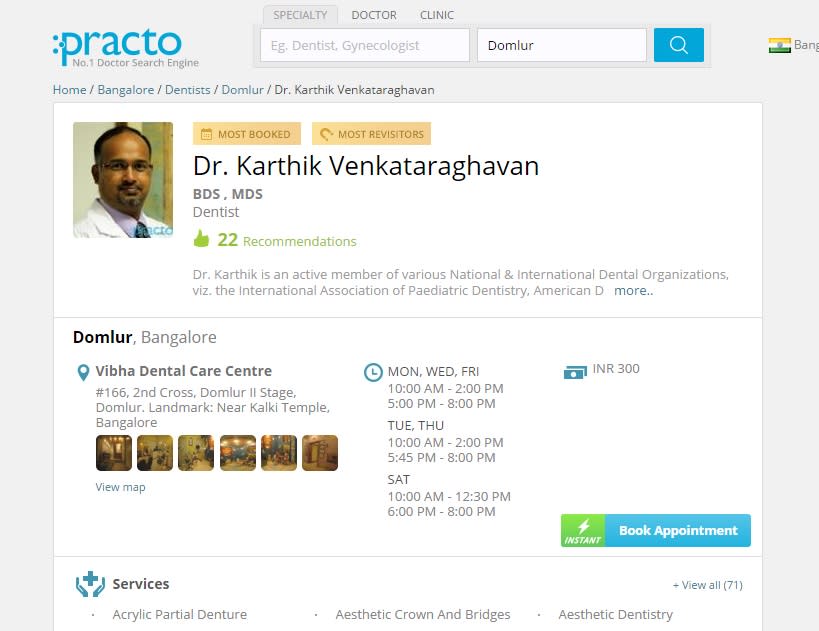With nothing to lose, two Indian college kids solve a medical problem, get Sequoia backing, wow Singapore

I grew up in a small but relatively prosperous, academically oriented south Indian town, where everybody knew everybody else plus their ancestors. That gave me a rather unusual perk. I had not one but several highly qualified family doctors to fall back on whenever something went wrong.
But when I moved to the metropolis of Chennai for higher studies, the prospect of falling ill became scary. Doctors were strangers and a couple of bad experiences at hospitals in Chennai, and later Bangalore, erased whatever traces of faith I had towards unknown doctors in big cities. Even for an allergy, I traveled to the other end of Bangalore from where I stayed, just so I could go to a diagnostician recommended by my close friend.
So when I heard of Practo, a search engine that claims it can help you find the most suitable doctors in your locality, I was more than curious.
A query for a dentist in Jayamahal, Bangalore, got me an astounding 4,184 listings. About 15 of them on the first two pages of the search results were in my neighborhood, and the rest were from other places in Bangalore. I could look up their profiles, book an appointment with any of them in real time, and use the embedded Google Maps to find the clinic.
Dentists are probably easier to find. I keyed in “Pediatric Pulmonologist” and found two.
I clicked on the first name, and it told me the doctor’s educational qualifications, specializations, experience, details of the clinic, and timings. There was a reason why he was ranked first.
Practo has a proprietary algorithm running in the backend, which ranks doctors listed on the site based on relevance – location and specialty, feedback from patients, and appointment experience. The number of appointments booked with a doctor in the last 30 days, doctor’s availability, and patient’s recommendations are key parameters to rank doctors.
In the list my query threw up, some of the doctors had badges for being most revisited, most booked, and recommended. Patients looking for doctors can pick the most suitable ones based on these and other criteria.
“This search engine is more reliable than going to a doctor based on a friend’s recommendation as it takes so many factors into consideration. And the process is entirely transparent as well,” Ashish S Pingle, who manages marketing for Practo, tells Tech in Asia. He was a practicing dentist in Mumbai, who used Practo’s patient management software for doctors, and was impressed enough to seek out the startup founders at a conference and get on board full-time.
With nothing to lose
Cut to 2008. Practo’s story starts when Shashank ND (who spells out only his first name) and Abhinav Lal were studying computer engineering at the National Institute of Technology (NIT), Karnataka.

There was no proverbial startup bug that bit them. Shashank’s father needed a knee surgery, and he wanted a reliable second opinion. He scouted far and wide, shortlisted the best doctors, and zeroed in on a particular specialist in the US. Then came the next hurdle. The doctor wanted to see all the medical records before giving his opinion. But there was no easy, secure, and quick way to get those across.
That experience got Shashank thinking. His friend Lal was a computer whiz, and together they decided to tackle it. “We found it weird that technology was playing no role in a problem that affects everybody. We have 10-year-old emails in our inbox but no trace of a year-old medical prescription. That was ridiculous,” Shashank recalls. “Also, word-of-mouth shouldn’t be the only option people have for something as important as finding a good doctor.”
The two friends set out to build a personal healthcare account. “All your healthcare data at one place, easily accessible, easily manageable, and shareable” – that was the idea. They started with a software for doctors to digitize the medical records of all their patients. The search engine to find good doctors came later.
There were hardly any SaaS-based startup successes in India back then in 2008. Even in the US, it was a young domain. “But we had nothing to lose really. We were still in college. If we built a limited product, nobody was going to brand us as failures. Students can afford to make mistakes,” Shashank chuckles. “Also, recession was on, the economy was in a shambles anyway. So there was minimum risk.”
Surviving startup graveyard
Building a software product while at college had other pluses. There was no rent to pay, help was around in friends and teachers, and pocket money came from parents. For extra fuel, Shashank and Lal would enter business plan competitions, and put their prize money to work. “All we had to give up was campus placements,” Shashank tells us.
Seed capital of about INR 10 lakhs (US$16,250) came from friends and family. In 2009, their startup, then called Turbodoc.in, was incubated by Morpheus Venture Partners in Bangalore, one of the few support systems available to startups in India then.
In May, 2009, Shashank and Lal launched their first product – Practo Ray – for doctors, clinics, and ambulatory care providers to manage their practices using the cloud technology. From electronic medical records to billing, and cloud telephony, Ray covered a lot of ground.
Around then, the most prevalent advice on selling SaaS products was to let customers do a self-sign-up. Occasionally, follow up with a call. So that’s what Shashank and Lal tried. Soon enough, they realized that convincing doctors who already had enough on their plate to try out a new software, that too over a telephone call, was next to impossible.
“We had no choice but to do feet-on-street selling. That was a real startup graveyard. Nobody sells SaaS products via feet-on-street model,” Shashank recalls.
But that sales tactic helped them get their early adopters. Doctors who tried it out, recommended it to their friends, and slowly they found more and more takers. “It had an SMS feature, which sent out a message to all patients reminding them about their appointments. In turn, the doctor would be informed if the patient cancelled. Also, it sent a daily schedule to the doctors. This feature really took off,” N Mohan Narayana Swamy, vice president of marketing for Practo, says.
Practo launched in Chennai, Mumbai, Hyderabad, Delhi, and Pune next.

Free for both patients and doctors
The big break came when Sequoia Capital came on board with series A funding of US$4 million in July 2012.
In the same year, Shashank and Lal launched Practo.com – the doctor discovery and booking platform for patients who wanted to make an informed choice while hunting for the right doctor.
To list the doctors, the plan initially was to find doctors who were already online. But there were few, and there was no easy way to verify how authentic the information was. “We figured we’d have to do it ourselves. We started with one street in JP Nagar, Bangalore, where I lived. It took us a whole day to collect details of all the doctors there,” Shashank recalls.
Practo’s “Blitz” team of six armed with smartphones went all around Bangalore, street by street, mapping doctors and clinics. It took them almost four months to complete the mapping. By June 2013, all that information was up on Practo Search. “The listing is free for doctors, as well as patients. Our revenues come from Practo Ray, the SaaS product,” Pingle explains. Practo Search also carries contextual ads, based on what patients search for.
By last December, 10 million doctor appointments were booked through Practo.
In March 2014, Practo Search launched in Singapore as well. “Within 135 days, Practo became the largest online clinic management software provider in terms of market share in Singapore,” Pingle says.
In India too, Practo Search has several competitors like Sehat which is closest to Practo, DocSuggest which recently raised INR15 crores (US$2.5 million), and DocTree which lets patients who want surgery get cost estimates from doctors.
Between six Indian cities and Singapore, Practo today lists over 100,000 doctors. It has just launched Practo Tab (a customized Lenovo tablet on which Practo software is preloaded). It has Android and iOS mobile apps as well.
So far, Practo has focused on clinics, and doctors with independent practice, but plans are afoot to expand to big hospitals and diagnostic centers. Two dozen second-tier cities in India and a few Southeast Asian countries are also on the list. “There will be differences in the level of technology adoption in different places. But be it Singapore or Bangalore, the problems that people face in the healthcare space are the same – from both ends, doctor’s and patient’s. And that’s what we solve,” Shashank says.
Now let me find a specialist in my neighborhood for that niggling backache I have been ignoring.
See: Funded by heavy-hitters, DocDoc lets you see a doctor’s schedule and make appointments in real-time
This post With nothing to lose, two Indian college kids solve a medical problem, get Sequoia backing, wow Singapore appeared first on Tech in Asia.



